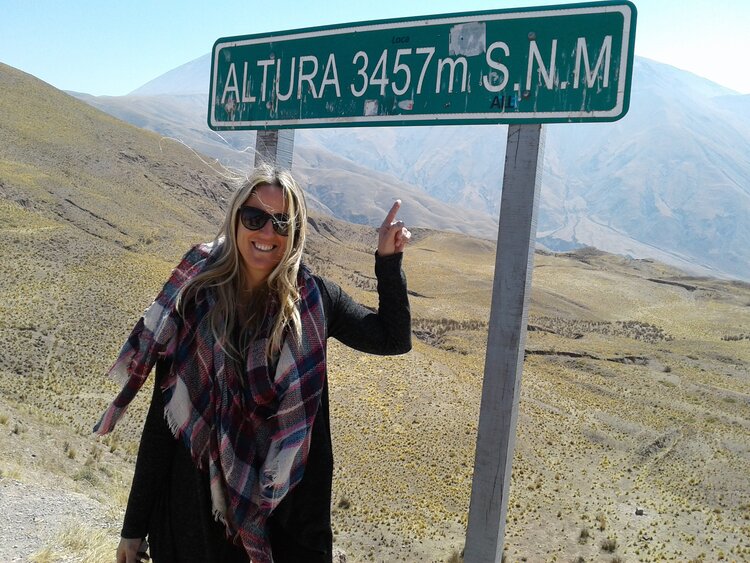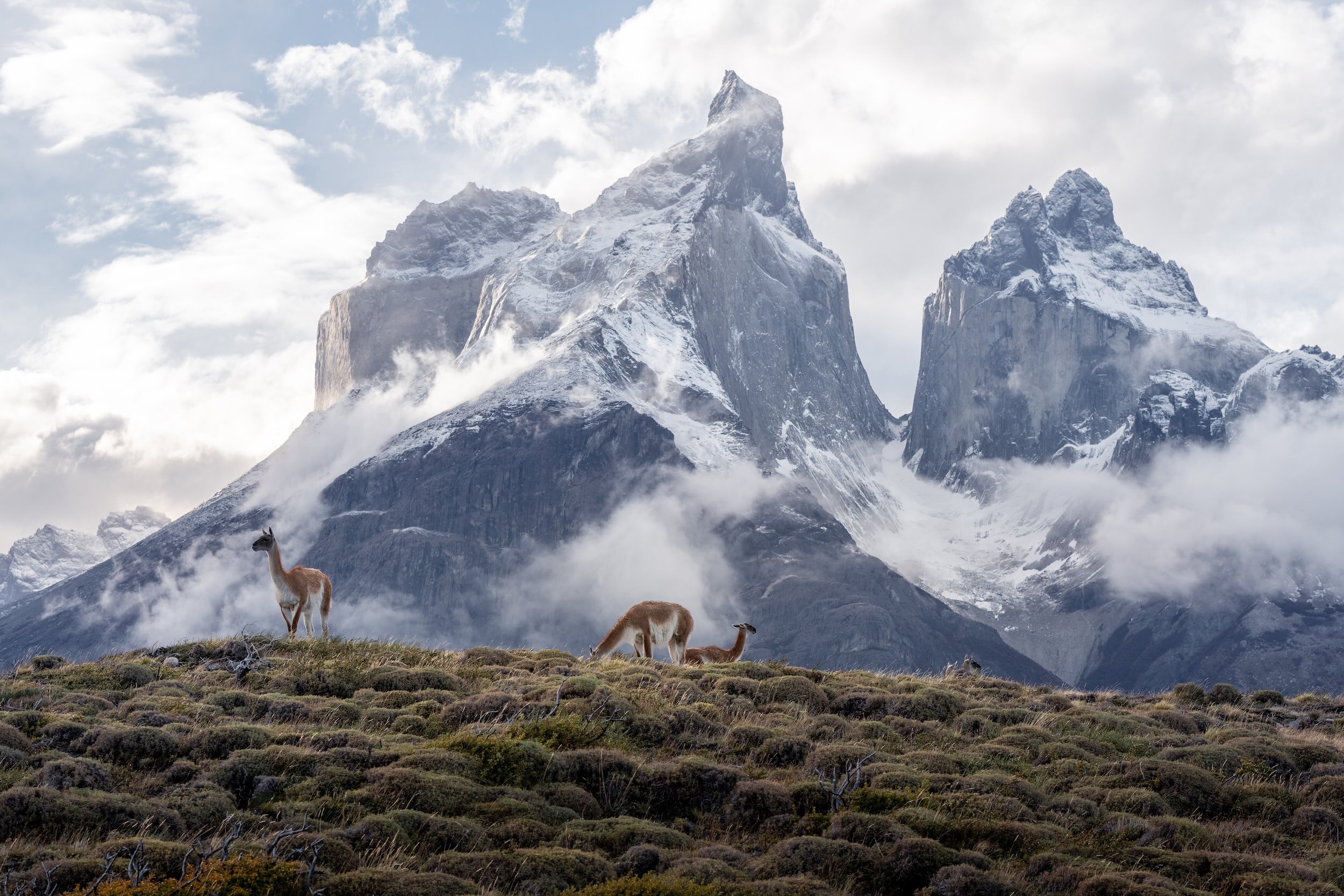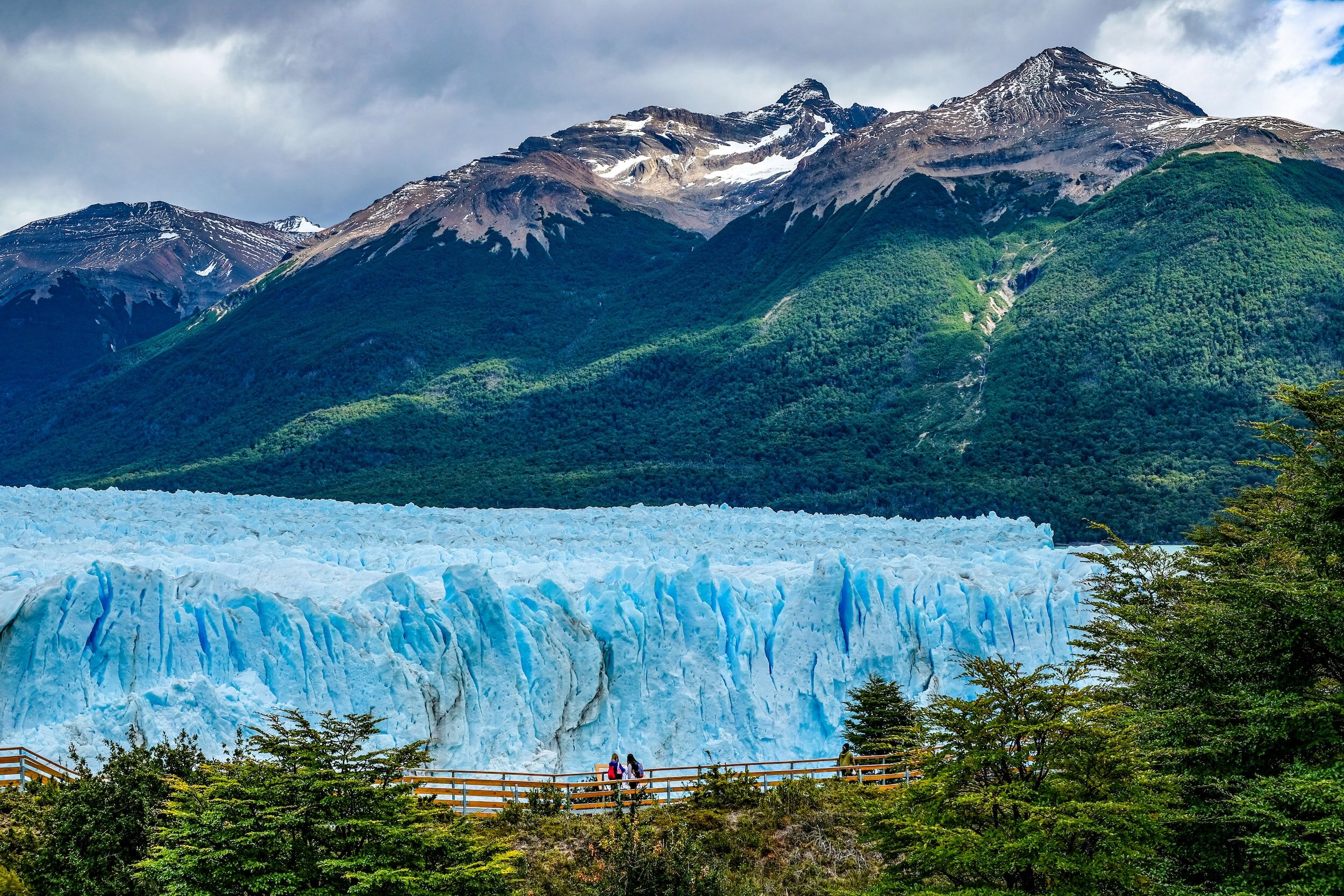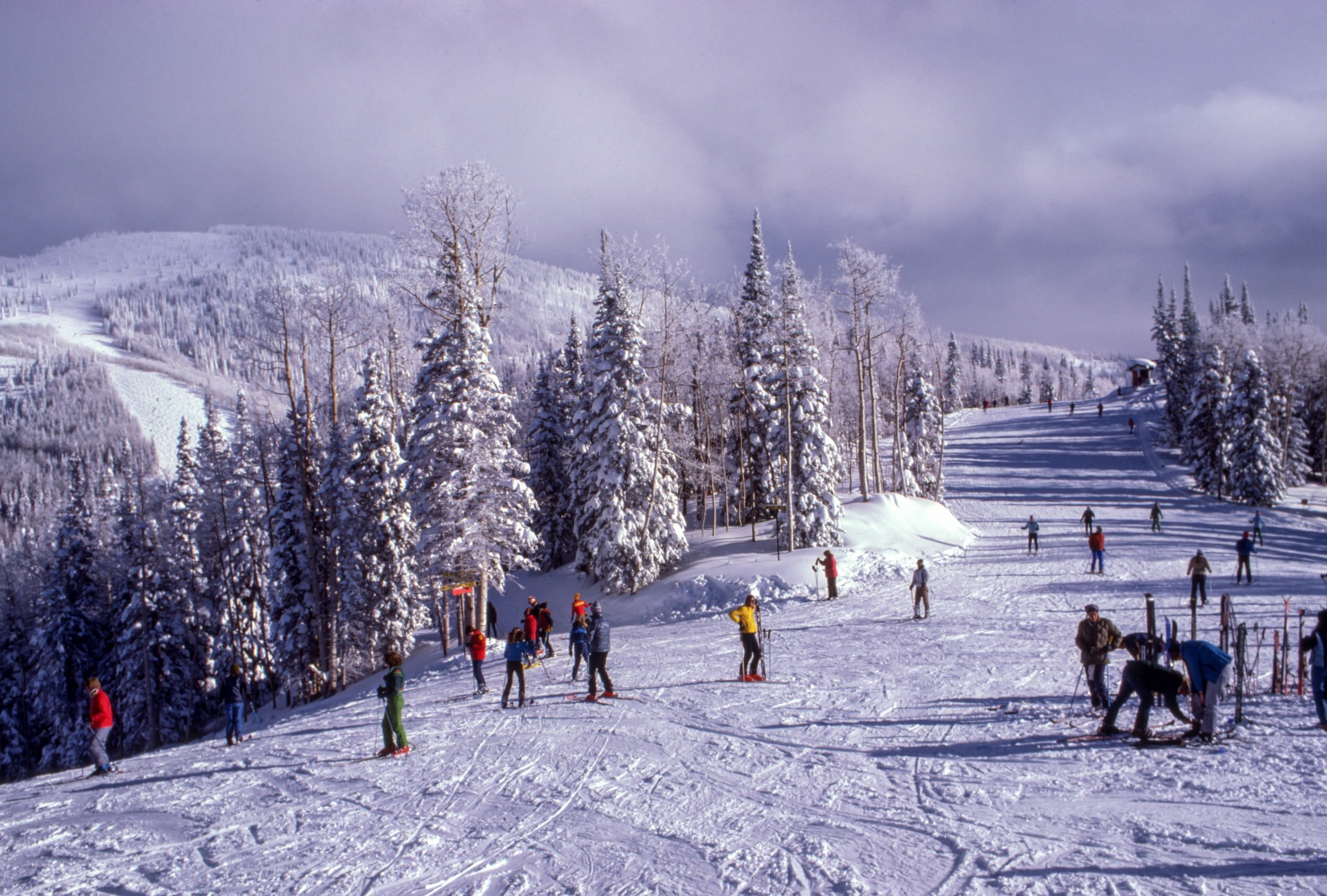Best Time to Visit Patagonia - A Local’s Guide
Patagonia is a vast territory in the far southern end of South America with imposing landscapes, pristine wilderness, and very unpredictable weather.
While every season has its magic, if you are looking for the best time to visit, it’s definitely between November and March. This period, comprising the end of spring and the full summer season, provides longer days with warmer temperatures - perfect for outdoor activities.
Summer days can have up to 16-17 hours of daylight and this gives you a chance to pack your days and take advantage of the countless wonderful things to do in Patagonia.
Having ample daylight is important for everyone, but especially hikers. Keep in mind that many of the best hikes can last between 8 to 10 hours, depending on your speed, so having so much sunlight will give you a chance to relax more and enjoy the landscapes without having to rush.
More sunlight, better weather, means more people too… It’s no secret that Patagonia in summer is popular, but even though some of the main hikes in the area, like the hike to “Laguna de los tres” in Chalten, or to “Valle del rio ascencio” in Torres del Paine, can be quite crowded, Patagonia is still a wild territory. This is the most uninhabited region of both Argentina and Chile, so even in the most crowded time you will still feel the vastness of nature.
More Argentina & Chile travel info
If you could use some one-on-one help planning your itinerary, schedule a Patagonia travel consultation with one of our Local Experts!
Plan your itinerary with local help
If you’re planning a trip to Patagonia and could use some help figuring out a great plan, schedule a Patagonia travel consultation with one of our Local Experts!
These are one-hour Zoom calls where you’ll get to chat with an Argentina or Chile-based travel pro about the trip you’re planning and they’ll share their tips and advice, answer your travel questions, and help you perfect your itinerary.
A brief Introduction to Patagonia
Patagonia, a region of stunning and pristine wilderness at the southernmost tip of the South American continent, spans the border between both Argentina and Chile.
Within Argentina, the borders of the Patagonia region are quite clearly defined, with it being considered the entire area south of the Colorado River. In Chile, on the other hand, things are less clear; the region of Araucania is usually considered to be Chilean Patagonia’s northern limit, but there is no official designation.
Stretching from the Atlantic on the east to the Pacific on the west, Patagonia includes many different ecosystems, the primary two being the Andean Forest and the Patagonian Steppe. Both eco systems cover massive territories.
The Andean Forest runs from the Pacific Ocean in Chile through the Andes and on to a thin strip of land on the Argentinian side of the mountains. The northern portion of the forest is called Valdivian and is much more bio diverse than the southern portion, which is a Beech forest that stretches south all the way to the island of Tierra del Fuego.
The Patagonian Steppe is the larger ecosystem and occupies most of Patagonia, especially in Argentina. It is a vast and windy dry desert. The Steppe was described extensively by Charles Darwin in his expedition with the Beagle and captain Fitz Roy (The Beagle voyage), and he found this terrain to be surprisingly attractive.
Within the Steppe and on the border between Argentina and Chile, you’ll find the famous Patagonian ice field, with many glaciers flowing east and west.
For some ideas on how to spend your time in Patagonia, check out this two week Patagonia itinerary and this list of 10 beautiful places in Patagonia.
Weather in Patagonia
Patagonia is a huge area and the region is known for fast-changing and unpredictable weather. When in Patagonia, you need to be prepared for every type of weather on every day of your visit.
We locals like to say that here you can experience all four seasons in the same day. It’s a joke, but there’s a lot of truth to it.
On a spring day, it can be sunny and warm in the morning, without a single cloud in the sky, and you might decide to go hiking in shorts. But then, in the middle of your hike, suddenly clouds roll in as if out of nowhere, the temperature drops precipitously, and you’re hit with a torrential downpour in chilly temps. A few minutes later, the sun might be back out. This is a pretty common occurrence in Patagonia.
The forecasts here are unreliable and the weather is always uncertain, so just be ready for anything.
During the summer season, temperatures are usually mild during the day and cool at night. Summer daytime temperatures in Patagonia range from between 40 to 70 degrees Fahrenheit, with nighttime temperatures regularly dropping into the 40’s.
Another important thing to consider is that Patagonia often has extremely strong winds. If you look at a world map, you’ll notice that the tip of South America is the only land (almost) between the latitudes of 40 and 60, which means that the wind goes around the globe with no land barriers until it reaches Patagonia. Be ready for strong gusts and extremely windy days.
Although summers in Patagonia are cold compared to most places, Patagonian winters are actually pretty mild. Why? Because we’re surrounded by the Pacific and Atlantic Oceans!
Average winter temperatures in Patagonia range between 30 and 40 degrees Fahrenheit in the coldest months (June and July). Winter is also usually considered a no wind season in Patagonia, so even though it is colder, you do not have those very cold winds coming direct to your face!
Rainfall happens all year round, with Ushuaia, which receives almost 2 inches of rain per month, being the rainiest area in Patagonia. In the areas of Torres del Paine and Los Glaciares National Park, the average rainfall is 1 inch of rain/snow per month.
Best time to visit Patagonia
On a personal level, I think late spring and summer is the best time to visit; everything is open - excursions, hikes, day trips, hotels, restaurants, etc. - so you get to enjoy all that Patagonia offers without exception.
Add to that the fact that you have plenty of options for buses, flights, hotels, and just about everything else, and coming in the summer becomes a no-brainer.
The same can’t be said for the rest of the year when much is closed.
As Patagonia has such harsh weather and is so uninhabited, many places and service providers only open between spring and early autumn (from late October through early April).
As such, in the winter inclement weather, park closures, and lack of service providers means that what you can do (and where you can go) is very limited.
Another reason to choose the summer is the liveliness and camaraderie you’ll encounter throughout the region.
Although coming in high season does mean that some hikes can be crowded, Patagonia in general is never overcrowded, and unless you are the type of person who does not like to see any other people when they travel, you’ll never feel like the region is mobbed.
And with other travelers around, there is a lot of fun to be had in towns and camp sites. Places like El Calafate, El Chalten and Puerto Natales, have some very good bars and restaurants if you want to include some night life in your travels.
And of course not to be forgotten, nature is at her best in this period. The contrast between the green trees and the ice of the glaciers, the flowers, the magnificent colors of the sky, and awe-inspiring sunrises all amount to a visit you will never forget!


When is high season in Patagonia?
High season in Patagonia runs from December through the end of February. November starts to get busy and March and early April will still have higher visitor numbers. October and April/May are what I would call shoulder season.
While visiting in off-season season may sound like a good idea (and it can be if you’ve planned well), please keep in mind that hotels and excursions will largely be closed outside of the summer season, and transportation options will also be drastically reduced.
Off-season visits require good planning and a flexible schedule. The aforementioned points are not applicable to ski and winter resort destinations like Bariloche, of course! Those regions of Patagonia are in full swing throughout the winter as well.
If you’re planning a visit in high season, get your planning done early and book well in advance. Patagonia receives more and more tourists each year and new hotel openings have not kept up with demand, meaning that places do sell out. The same is true guides, excursions, and activities. If you don’t book in advance, you may not find any availability.
I usually recommend that visitors start making their bookings 5-6 months prior to their arrival. This mostly applies to hotels and tours/excursions. For hikers, the only hikes you need to book in advance (and pay for in advance too), are the W and the O circuits in Torres del Paine National Park in Chile.
These are very popular treks, and they only allow a certain amount of people per day. While this makes your planning a bit harder, it’s actually a very good idea and keeps the trek more enjoyable for all those involved (and for the park’s flora and fauna too!). All other hikes in the region can be done without a travel company and you do not need any advance reservation.
If you’re trying to do Patagonia on a budget, I’d recommend coming in shoulder season (September through November or March-April). These periods are a good option for budget travel as most hotels and excursions are open, but there are few people around so prices are much lower.
What to pack for a trip to Patagonia
Because of the unpredictability of Patagonia’s weather and the widlly fluctuating temperatures, I always recommend dressing like an onion – ie. wear many layers! Layering will make it so that you can quickly take off an item or add one on to adapt to the weather changes.
Start with an insulating base layer, which will keep you warm and comfortable. I always prefer merino wool for this, but there are some ok synthetic fabrics too.
Cotton base layers are never a good idea because once they get wet (whether it’s from sweat, rain, or something else), they stay wet for an extended period and will make you cold for the rest of the day. Merino wool and synthetics will dry much faster.
After your base layers, you should wear comfortable hiking or outdoor/athletic clothing in which you can move freely. On top of that, plan on bringing a thick fleece jacket or sweater.
Rain gear (Gore-Tex is always best) is also super important if you want to have a good time without suffering all day! Typically, travellers bring rain jackets, but they skip the rain pants.
This is a big mistake, as heavy rain and strong winds typically mean that all your body, and not just your upper half, is likely to get soaked. To avoid walking around soaking wet, make sure to bring (and wear!) rain pants as well.
Finally, having a good pair of boots, preferably waterproof ones, is crucial. If you’re planning to hike a lot, make sure to break your boots in well before your trip, otherwise you’re going to have to deal with lots of blisters.
And if you’re visiting toward the end of summer/beginning of autumn, packing a pair of gaiters is a very good idea. Burr plants are prominent at this time of year, and getting constantly pricked by their sharp teeth while hiking can be really painful.
On warm days you’ll probably want to hike in shorts, which means that your legs will be exposed. So, if you don’t want to wear pants, but also don’t want to wind up with pricked and bloody legs, you can pop on a pair of gaiters.
One quick and important note about packing: for domestic flights, Argentina has a weight limit of 33 pounds for checked luggage and 11 pounds for carry-ons.
Keep that in mind as you pack your bags, and weigh each of them to make sure you stay under the weight limits.

Connect with a Patagonia-based local expert for help perfecting your itinerary, answers to all your travel questions, and fabulous local tips for a better visit!
Best time for hiking, rock climbing, and mountaineering
For hiking and rock climbing there is no doubt about it, high season (summer) is definitely the time to come.
Not only because of the temperatures but also because of the amount of daylight too. 7 hours of daylight in the winter doesn’t leave you much time for activities whereas 16 surely does. Summer is the obvious choice.
If you are planning to camp or sleep in mountain refuges, most are closed in off season too.
I don’t think there’s a specific month that is best; any time between mid-November till the end of March or even the beginning of April will be fine.
For hikers, bear in mind that most multiple day hikes are now allowing only a certain number of hikers per day, so you need to book your space in advance.
This is mainly for the W or O trails in Torres del Paine National Park, but also for some hikes in Nahuel Huapi National Park too.
As for climbers, most mountain climbers to Patagonia choose the famous granite peaks of the region for their adventures. This means mostly the El Chalten area, home to Mt Fitz Roy and Cerro Torre.
Many climbers plan to be in the area for a long time, even months, waiting for a good weather “window” to go up.
Careful; the climate in Patagonia is changing (like everywhere else in the world), so we now frequently have high temperature days followed by freezing cold, all of which makes climbing more complicated due to the increased risk of avalanches. Get in touch with local climbers and the rangers office to find the best days to go up.
Best time to see wildlife
Patagonia does not have a great deal of bio diversity when compared with other areas of the planet, but you can still see some beautiful animals.
Visitors can spot birds, such as the Andean Condor, the huge Magellanic woodpecker, and the Lesser Rhea. Other animals include guanacos, foxes, skunks, armadillos, the endangered and elusive huemul deer, and of course the Puma, our great mountain lion.
If you are a nature lover and you want to see animals, high season is the best time to come down here too.
Animal reproductive season in Patagonia is fast - animals must reproduce at the beginning of spring, and by the end of summer all chicks have to be old enough to get by on their own (the weather necessitates it!).
This means that depending on what you want to see, you need to plan well as the stages are quick. In general, December through March is the best time of year to come for wildlife viewing.
If you come in October/November, you might see many new-borns and mating season.
If you come in December/January, you might see babies of all species. Spotting the Rheas in December/January is particularly neat as the male is the one who cares for the chicks and sometimes you can see a dad with up to 15 chicks behind him.
Penguins are always a wildlife highlight in Patagonia. There are many colonies of Penguins in both the Atlantic and the Pacific Ocean, as well as the Beagle channel and the Strait of Magellan. The largest colony is the one at Punta Tombo, with up to 400,000 resident penguins!
Penguins start arriving in October. Males come first to prepare their nests and then female come along to see if they did a good job! After they mate, they lay one or two eggs.
Chicks grow very quickly, and by April they are ready to go on their own to the ocean! So whenever you choose to come, you will find the Penguin colonies in different, unique stages.
The Valdes Peninsula requires a paragraph of its own, as it is the number one destination for wildlife in Patagonia.
It’s a UNESCO world heritage site and one of the most important areas for marine mammals and birds in Patagonia, such as the Southern write whale, sea lions, elephant seals, orcas, and the magellanic penguin. Valdes is often a highlight for wildlife lovers.
And a quick note about Orcas: for anyone who wants to try to see and photograph the Orcas feeding on baby sea lions on the beach, know that even though orcas can be seen from September till April, the hunt can mainly be seen in March & April.
Best time for scenery & photography
Photographers can find spectacular vistas in Patagonia all year round. But if you must choose a specific time for the best panoramas, it would be autumn (late March through April).
Autumn is especially brilliant in the south of Patagonia, Los Glaciares & Torres del Paine National Park, and Tierra del Fuego. This is because two species of the southern beech forest, the Lenga and the Ñire, are deciduous, and lose their leaves.
So in autumn you can encounter amazing colors; vibrant reds, oranges, and yellows, whose colors and contrasts are magnified by the the high peaks and immense glaciers behind them. Your photos are sure to be stunning.
Spring can surprise you too though, especially November, as you have a great variety of wild flowers & land orchids in bloom.
Best time for skiing and winter sports
Winter in South America runs from June to September, and you might find snow sometimes in October too.
With this in mind, planning your trip for July or August is the best choice if you want to be sure you have enough snow to hit the slopes.
Bear in mind that in July we have our winter school holidays in Chile & Argentina (usually two weeks begging close to the 9th of July), and ski resorts can become quite crowded.
Below, I’ll share a bit of info on some of the most popular ski areas/resorts in Patagonia as well as some of my personal favorites.
Cerro Catedral, located twelve miles away from Bariloche in the Lake District of Northern Patagonia, is the most known ski resort in Argentina.
75 miles of pistes (slopes), more than 30,000 beds available between the mountain’s base and Bariloche town, and easy accessibility with many flights to/from Buenos Aires, make it an easy choice. It also has an amazing backcountry hut skiing system for more adventurous and experienced skiers!
La Hoya, close to Esquel town, is great if you are looking for incredible off-piste skiing and less-crowded terrain. With almost 16 miles of pistes, and much cheaper prices than Bariloche (for both accommodation and the resort itself), the only downside to La Hoya is that there are not many flights to Buenos Aires and the small airport is often closed due to snow.
Chapelco is a beautiful resort located 12 miles away from the town of San Martin de los Andes.
It’s preferred by many because it is not as crowded as Cerro Catedral and it has a stunning location in an area surrounded by lakes and Andean forest. Chapelco recently won a prize as the best ski resort in Argentina from The World Ski Awards.
Cerro Castor is probably my favorite ski resort in Argentina. It is Located on the island of Tierra del Fuego, in Argentine Patagonia. Considered one of the most modern resorts, Cerro Castor is 17 miles away from the city of Ushuaia, in the Beagle Channel.
Although not the biggest of Argentina’s ski resorts, I find it special because Ushuaia offers lots to do beyond skiing. And it’s also just hard to beat the location - skiing in the world’s most remote city at the ends of the Earth! If you like cross country skiing, this is where you have to go.
It is also a very well-known place in Patagonia for dog sled races.



Chat with a Patagonia expert
























